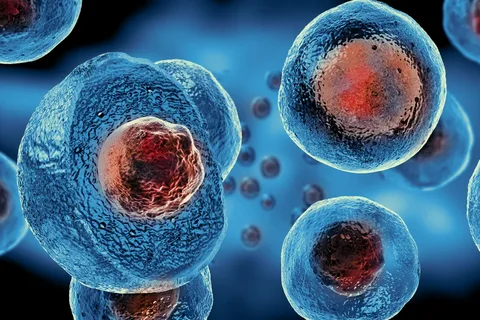Stem cell research holds tremendous promise for developing new medical therapies and treatments. However, before stem cells can be used clinically, it is crucial to properly characterize and screen them through rigorous testing known as stem cell assay. Over the past few decades, scientists have developed novel techniques for stem cell assay that are helping push the field forward. This article explores some of the emerging methods and how they are enhancing our understanding of stem cells.
What are Stem Cells?
Stem cells are unique cells found in all multicellular organisms that have the remarkable potential to develop into many different cell types in the body. There are two main types of stem cells – embryonic stem cells, derived from human embryos a few days old, and adult stem cells that exist in various tissues such as bone marrow, brain and skin. A key property of stem cells is their ability to renew themselves through cell division and differentiate into specialized cell types.
Importance of Stem Cell Assay
Stem cell assay involves systematically testing stem cells in the laboratory to identify their unique properties and differentiation potential. This ensures stem cell isolates are pure and have not been contaminated or transformed during culture. Assay methods examine stem cell viability, proliferation rates, cell surface markers and their ability generate various cell lineages under controlled conditions. Proper characterization through assay is crucial before using stem cells for research or clinical applications to avoid any harmful effects.
Emerging Stem Cell Assay Techniques
Scientists are developing advanced stem cell assay techniques with enhanced precision, sensitivity and throughput. Here are some notable emerging methods:
Flow Cytometry for Cell Surface Markers
Flow cytometry allows rapid analysis of cell surface protein expression on thousands of individual cells. It is commonly used in stem cell assay to validate the presence of characteristic stem cell markers and absence of contaminating mature cell types. Advances include panels of monoclonal antibodies against dozens of markers analyzed simultaneously for thorough characterization.
Single-Cell Transcriptomics
This technique analyzes gene expression patterns in individual stem cells. It provides high-resolution insights into cellular diversity, fate decisions and signals regulating self-renewal versus differentiation. Droplet-based microfluidics enables transcriptomic profiling of thousands of cells in parallel. Such assays uncover gene signatures defining distinct stem cell subpopulations.
Live-Cell Imaging and Time-Lapse Microscopy
These emerging techniques capture dynamic processes like stem cell proliferation, adhesion, migration and differentiation in real-time over several days. When combined with fluorescent markers, they enable long-term tracking of individual stem cells and their progeny. Studies use these methods to quantitate parameters like doubling time, differentiation kinetics and morphological changes.
Microphysiological Systems
Also known as “organs-on-chips”, these novel 3D microfluidic cell culture platforms mimic the in vivo stem cell niche more accurately than conventional methods. Entrapping stem cells within tiny organ and tissue mimics, assays examine how extracellular matrix, fluid flow and cell-cell interactions regulate stem cell behavior and multipotency. The systems hold promise for predictive preclinical testing.
High-Content Imaging and Image Analysis
Advanced fluorescence microscopy coupled with automated quantitative image analysis vastly increases throughput of morphological and phenotypic readouts from stem cell cultures. Assays can detect dozens of parameters describing cellular morphology, network formation, protein localization and other features. When analyzed at the single-cell level over time, this technique provides rich datasets on differentiation dynamics.
Molecular Assays for Lineage-Specific Transcription Factors and proteins
Besides the above functional assays, stem cell characterization also relies on assays examining the expression of specific markers as differentiation proceeds down distinct lineages. Quantitative PCR, immunostaining and flow cytometry are used to monitor levels of key lineage-specifying transcription factors and membrane/secreted proteins in differentiating stem cell culture over time. Together, a panel of lineage markers helps validate true developmental potential.



